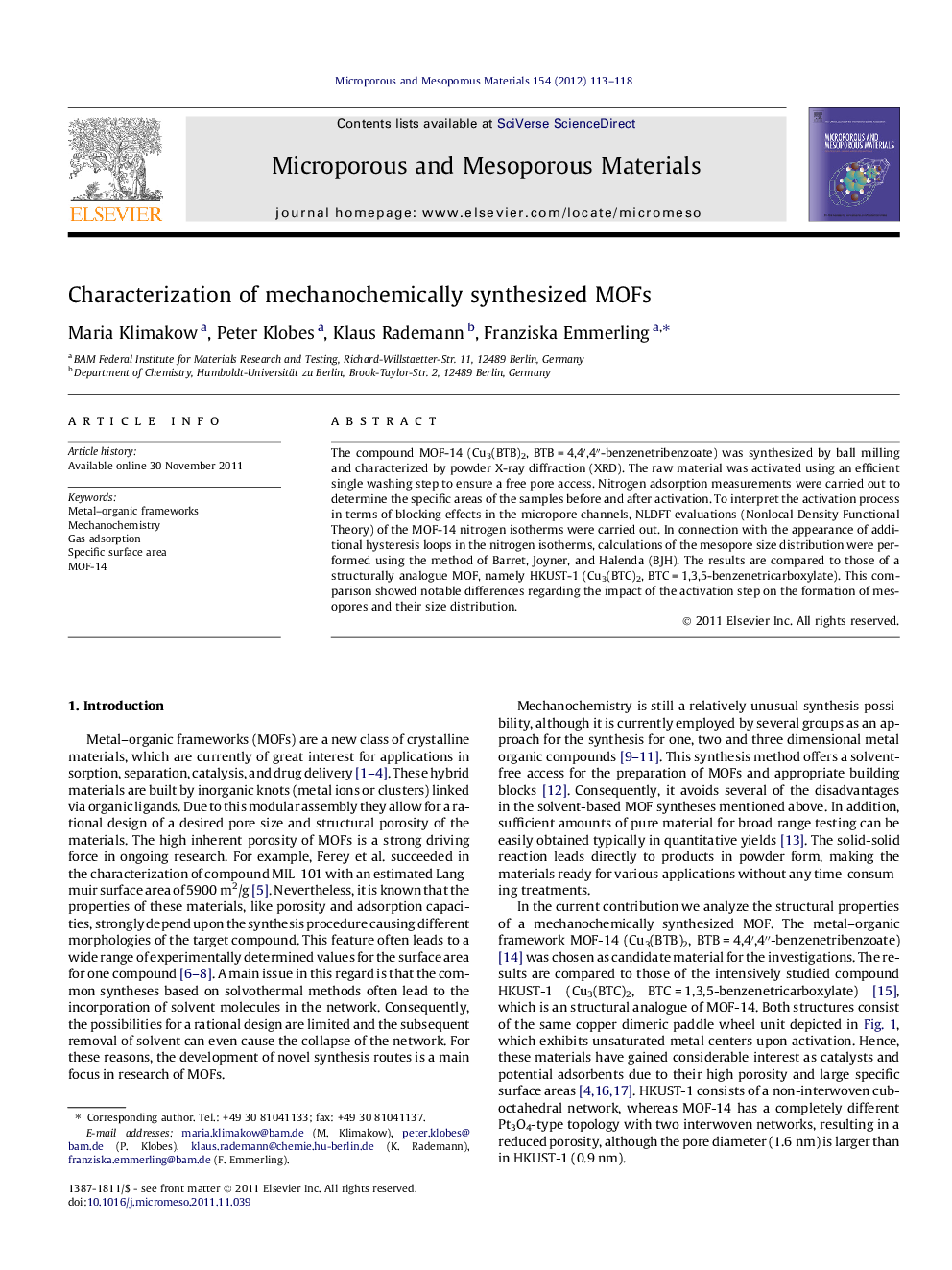| Article ID | Journal | Published Year | Pages | File Type |
|---|---|---|---|---|
| 74550 | Microporous and Mesoporous Materials | 2012 | 6 Pages |
The compound MOF-14 (Cu3(BTB)2, BTB = 4,4′,4″-benzenetribenzoate) was synthesized by ball milling and characterized by powder X-ray diffraction (XRD). The raw material was activated using an efficient single washing step to ensure a free pore access. Nitrogen adsorption measurements were carried out to determine the specific areas of the samples before and after activation. To interpret the activation process in terms of blocking effects in the micropore channels, NLDFT evaluations (Nonlocal Density Functional Theory) of the MOF-14 nitrogen isotherms were carried out. In connection with the appearance of additional hysteresis loops in the nitrogen isotherms, calculations of the mesopore size distribution were performed using the method of Barret, Joyner, and Halenda (BJH). The results are compared to those of a structurally analogue MOF, namely HKUST-1 (Cu3(BTC)2, BTC = 1,3,5-benzenetricarboxylate). This comparison showed notable differences regarding the impact of the activation step on the formation of mesopores and their size distribution.
Graphical abstractFigure optionsDownload full-size imageDownload as PowerPoint slideHighlights► Mechanochemistry is used to synthesize metal–organic frameworks. ► Activation of the raw products leads to enhanced specific surface areas. ► Adsorption isotherms show hysteresis loops. ► Calculation of pore size distributions with BJH and DFT method. ► Comparison of two MOFs shows different influence of the activation on the formation of mesopores.
